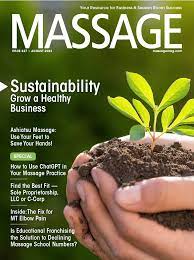I built my practice on massage for pain relief. You can, too. And you don’t need to shell out thousands of dollars to learn how to do it. Why? Because on some level with every massage you do now, you’re already doing pain relief massage.
You can make pain relief massage your signature massage by doing these 3 things: 1. Calibrate your pressure, 2. Double down on therapeutic rapport, and 3. Follow a treatment plan.
I Thought I Had the Answer
I became certified in neuromuscular massage therapy (NMT) in 1999 because I wanted to get people better. In my mind at the time, here’s how things would go down: I’d work on clients, they’d get better and then they’d never come back.
But what I didn’t understand was that pain was complicated. It may have a non-musculoskeletal origin. And even if it had a musculoskeletal origin, the NMT intervention may not be effective.
Embarrassed to Take my Client’s Money
When some clients started coming back to see me on a regular basis, I felt like a failure because I didn’t get them better. Instead I only gave them some temporary (not forever) pain relief.
Fortunately, even though at the time I didn’t value pain relief massage, my clients did. And in a relatively short period of time I had enough clients to open my first office. Soon after, I couldn’t deny that pain relief massage was having a huge, positive impact on my clients’ lives. And I became interested in figuring out how I could give the most effective pain relief massage possible.
Calibrate Your Pressure
I found that the appropriate pressure is the single most important element to pain relief massage. With acute pain, too much pressure can aggravate a condition. Conversely, for someone with recurring pain who responds well to deep pressure, not enough pressure is ineffective and a waste of her money.
When in doubt about pressure, try this technique that I was taught in NMT training. Say to the client: “Imagine a pain scale that goes from 1 to 10. One is the lowest amount of pain and 10 is the highest. As I press on a tender or tight spot, I want you to give me a pain rating.”
If you get a 5 or above response, lighten your pressure. In most cases if you work between a 3 and 4, you’re going to, ultimately, lessen your client’s pain, not increase it.
Double Down on Therapeutic Rapport
Pain is not just a biomechanical response. How we interact (and connect) with our clients can actually lessen or increase their pain. If you’re having trouble connecting to a client, try my Elderly Grandmother technique.
Imagine that your client is your elderly grandmother. How are you going to treat her?
First, you’re going to slow down and take your time. Then you’re going to make sure that you understand what she’s saying and that she understands what you’re saying. Lastly, you’re going to do everything in your power not to upset Granny. And subsequently, you’ll create a calm and supportive environment.
An abbreviated way of looking at therapeutic rapport is: It’s all about Granny for the next hour!
[If you want specifics about developing great therapeutic rapport, check out my article in Massage & Bodywork Magazine—Four Lessons on Chronic Pain (Notes from a Mountain Guide).
In this article, Maximizing the Placebo Effect, I explain how to increase the placebo effect (a positive response) through therapeutic rapport. In a more recent article, I explain how the placebo effect can be fine tuned. Here is an interview I did about the article.
Follow a Massage for Pain Relief Plan
A treatment plan is essential in order to do an effective pain relief massage. When you have a plan you’ll be on target to address the pain issues the client wants you to address. A plan also puts your client’s pain in a massage framework for current and future discussions. And a plan is something that you can go back to and adjust if your client doesn’t feel better. If he does feel better, you know what to do the next time.
The treatment plan I follow comes from my research and experience. It’s universal in the sense that it works with any type of massage modality.
a. Pre-massage: identify pain areas before the client gets on the table.
This ensures that you will always find the problem areas once the client is on the table. And it builds therapeutic rapport. For more about this read My Simple (Secret) to Better Pain Relief Massage.
b. During the massage: commit to a course of action.
Let’s say your plan is to work the upper-trap for a neck/shoulder condition. But once you get the client on the table you find that the levator scapulae is the tight muscle. No problem. Change your course of action–but stick with the new plan. In Get Your Client Out of Pain: Put a Stake in the Ground, I explain why having a course of action can make or break a pain relief massage.
c. Post-massage: tell the client what you did, what you found, then provide recommendations and follow-up.
Now it’s time to lay it on the line. Once you’ve done your work, go over the highlights of the massage (e.g., I found you’re piriformis to be tight) and then make recommendations to further lessen the pain (e.g. self massage at home). Follow up in a couple of days.
If the massage helped, great! If not, it’s time for Plan B if you think it’s warranted.
Your Massage for Pain Relief Practice Starts Now
You can build a practice quickly by making pain relief massage your signature massage. And it’s not a far stretch from what you’re already doing. If you focus on
-
-
- calibrating your pressure
- doubling down on your therapeutic rapport
- following a treatment plan
-
you’re going to see big changes with your client retention.
Seriously, you got this! Just follow this formula to start. Over time you’ll make it your own.
Free Course to Jumpstart Your Massage Business
If you’re just starting a massage business and want to incorporate pain relief massage into your business model, this free course will get you to your 30K a year: Jumpstart.
If you’re trying to take a meh massage business and make it a dream massage business, go here: Accelerator.







Comments on this entry are closed.